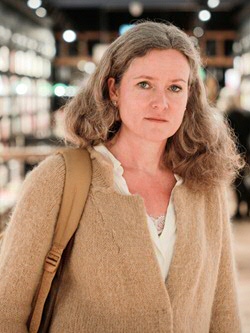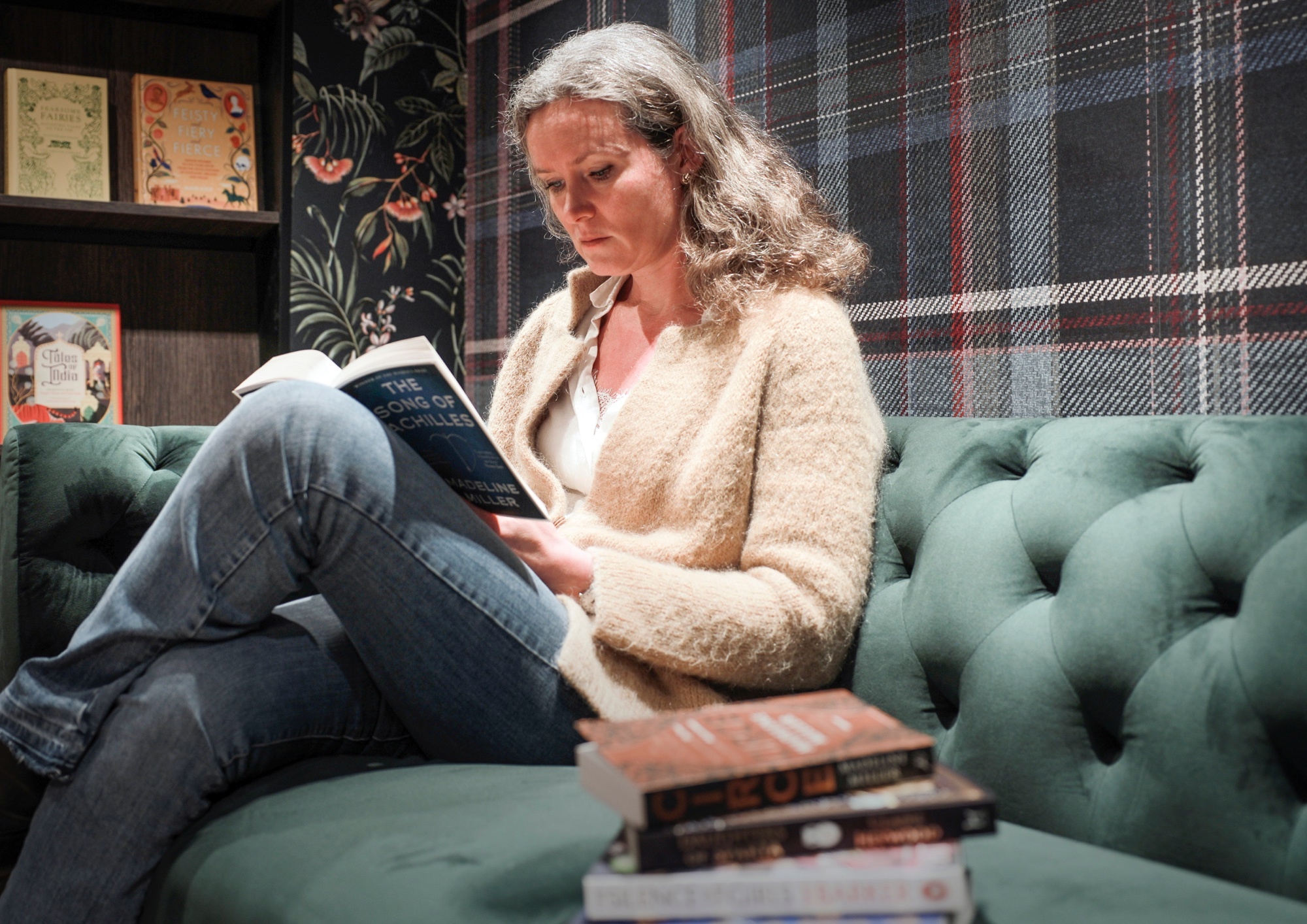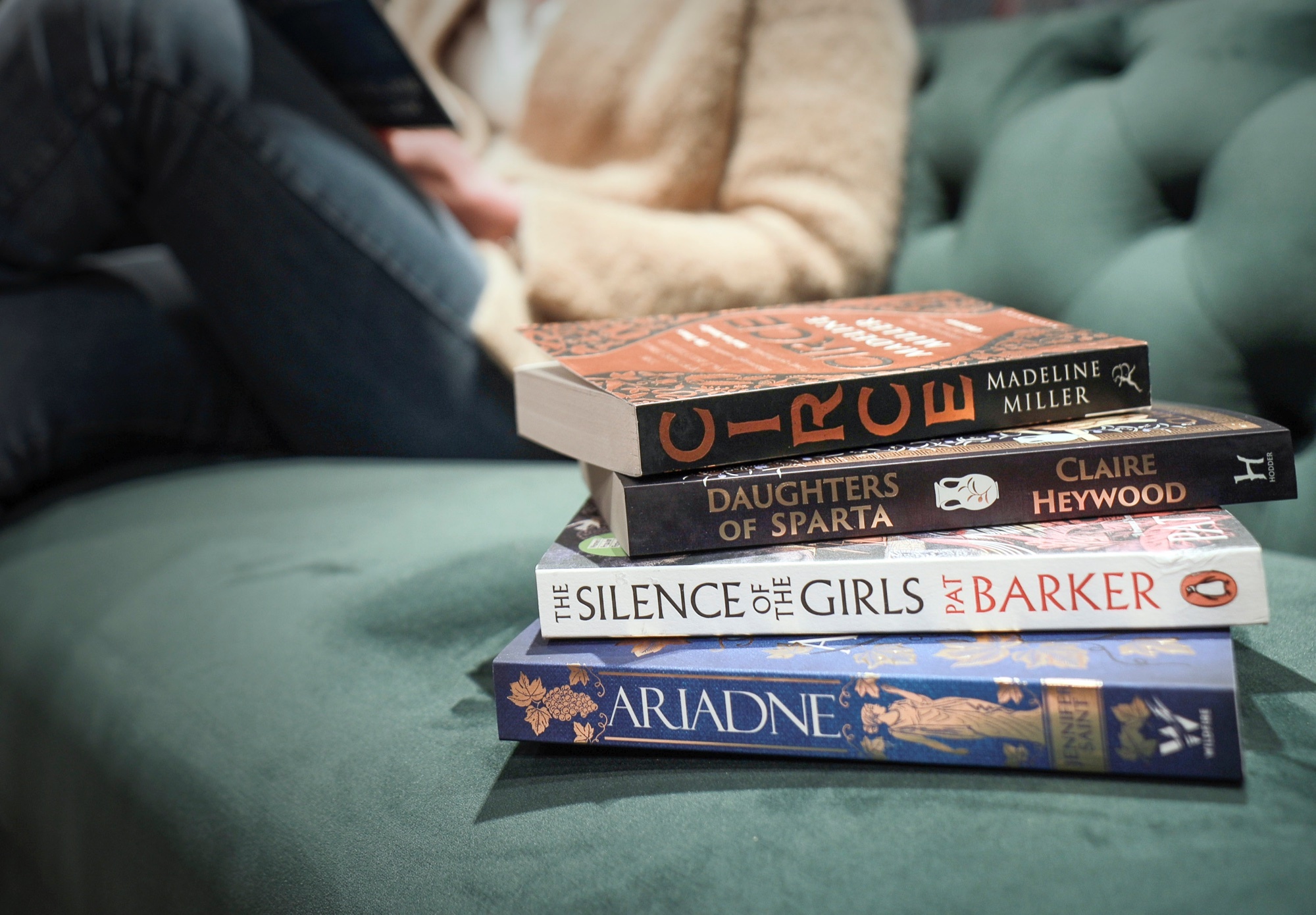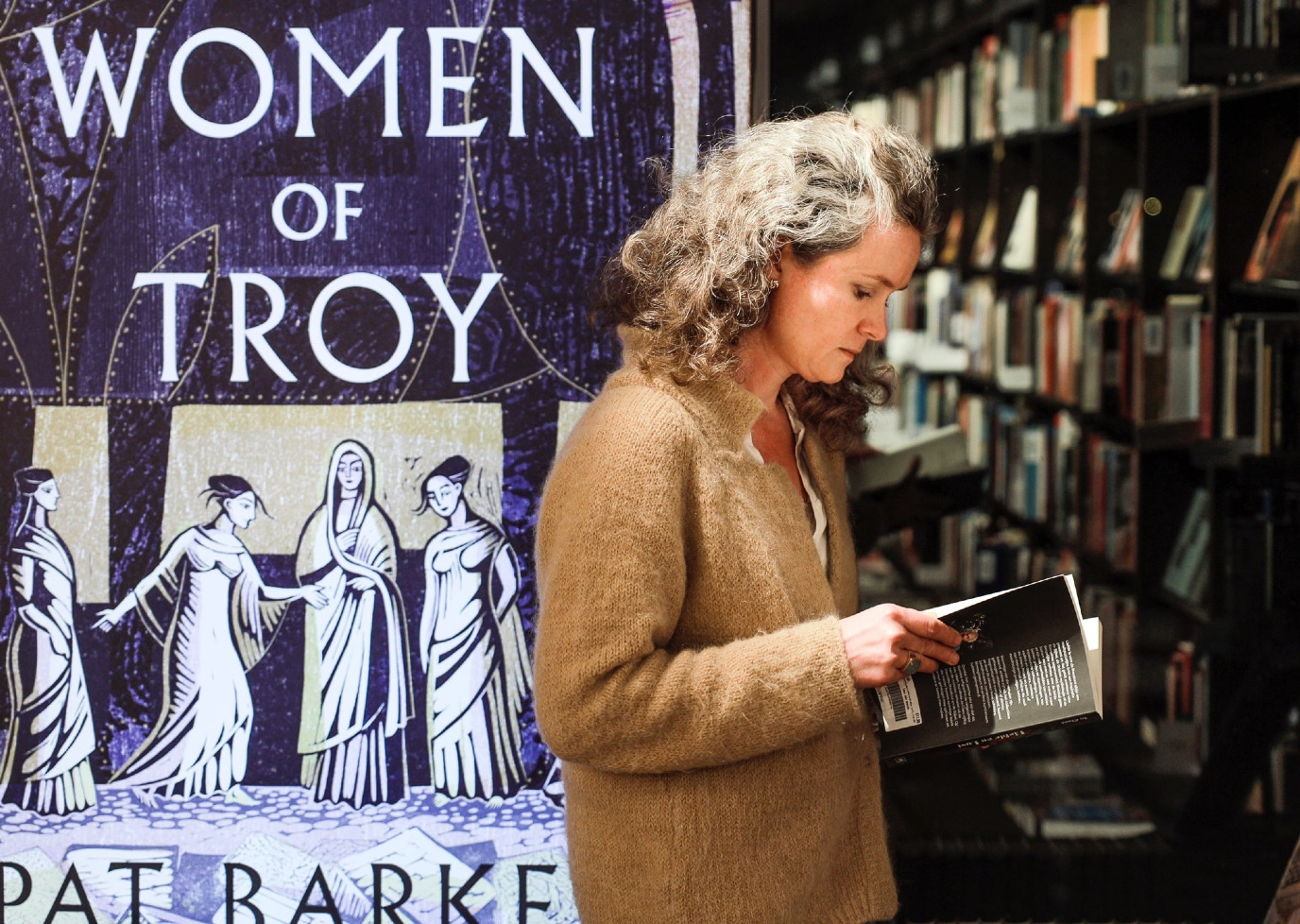Women in the spotlight in new Greek myths

Greek myths: exciting, mysterious, and sometimes bizarre tales from the Antiquity. They often address ethical issues and abrasive conflicts— including disagreements between men and women. Classic mythological stories have been written in a certain Zeitgeist and from a specific, often male, perspective. But how would these stories sound if we looked at them through a current lens, and from a female perspective?
Text: Aurelia te Lindert, UG Communication Office; photos: Henk Veenstra
That is what is being done in popular retellings of Greek myths, a genre that has received an enormous boost over the past few years. In her book De Bestseller-Muze, pop-feminisme en de oudheid in populaire fictie [The Bestseller Muse, pop-feminism, and the Antiquity in popular fiction], expected to be published in 2025, author Jacqueline Klooster explores the question of why such retellings are told in the first place, and how they are received. Klooster is an assistant professor in Greek Languages and Cultures, with a specialism in literary studies. Her interest in the reception of the history of the Antiquity, the manner in which the Antiquity is still processed nowadays, led her to the idea to write this book.
No identification
Klooster began to study classical languages at the age of 18 and was gripped by the texts and literature. ‘I found the stories so beautiful and fascinating, but I did have trouble identifying with the stories. You do read about women, but you also clearly understand that these women are not like you. I only realized later that these stories were largely written by, and likely also for, men.’ The understanding and identification came later, when Klooster began to read retellings of the stories from a female perspective. In such retellings, not only are the angles from which the stories are told different, but characters who previously had no or little voice are now given the spotlight. ‘I can identify with characters in these retellings. I understand what the retellings are about and I understand why people find it interesting to tell such old stories in this new manner.’

Adding to existing stories
It is not only the aspect of identification that is important to Klooster. The mysterious characters also give reason to expand on the stories, in her opinion. ‘Take Circe for instance, the goddess residing on an island visited by Odysseus, as told by Homer in the Odyssey. She is a fascinating character, and you think: what sort of woman is she, who lives totally alone and turns men into pigs? Why does she do this? It is then funny to see that this material really gives reason for additions. As if it was actually intended.’
Rehabilitation for women
According to Klooster, stories from the Antiquity are largely written by men. They are also suspected to have been written for a male readership, but this obviously cannot be proven. In any case, the female characters appear to be somewhat underappreciated. ‘We are given, for instance, little insight into their thought processes or motives. Or they are portrayed negatively.’ As an example, Klooster names Clytemnestra, who murders her husband when he returns home from the Trojan war. She is portrayed as a terrifying spectre for men. ‘But what if we look at things from her perspective, and explore why she did what she did? Before the war, Agamemnon did offer up their daughter for the fleet to be able to set sail. There is always a core of that dilemma within the original texts, but if you retell it, you soon see another picture with a different emphasis. In this way, retelling provides some kind of rehabilitation for these female characters.’

#MeToo as the catalyst
These retellings are not a new phenomenon, but Klooster believes that they have been given a boost over the past five years. ‘I think that the #MeToo movement has been a catalyst, a trigger to recognize such patterns in these old stories.’ Sexual harassment and assault is often prevalent in these myths. For instance, in the Metamorphoses written by Ovid. ‘The incredulous thing is that these stories have always been read, even at secondary school, and these acts have almost been seen as something “frivolous”. Or the word “love” is used. You could argue whether or not the stories are actually about this, or whether they are rather crude stories about positions of power, in which situations are abused and there is no question of consent.’
Irreconcilable conflicts
Myths are often about conflicts, dilemmas, taboos, or problems. Although they often describe bizarre situations, we can connect them relatively well to our own lives. According to Klooster, this is because the dilemmas are recognizable. ‘In many myths, you see for instance that the woman takes a completely different perspective than the man.’ This is clear from the previous example of Clytemnestra. Agamemnon felt that he was obliged to offer up their daughter up for the war, while Clytemnestra could not understand why her husband found the war more important than his own family. ‘So, they actually both did something horrible, and you cannot simply say who was the most to blame. These sorts of stories are therefore about irreconcilable conflicts and how to resolve them. Either from a familial, societal, or religious standpoint.’ It is subsequently put to the reader to weigh up the question of blame, or to deduct the moral of the story. The aim is to get people thinking.

Complex problems
As the original stories were told by men for men, the retellings from a female perspective could be seen as intended for female readers. But they can be helpful to all readers, to gain new insights. It is important to Klooster that such retellings do not just reverse the roles: ‘If you only reverse the situation, so that the female characters are suddenly “blameless victims” while the men are “guilty”, the stories will be too one-sided and will often be uninteresting. But there are also books that do not offer such an easy conclusion, and that reflect the various perspectives.’ This complexity means that some retellings are stronger and hold up better than others, explains Klooster.
Literature as a safe space
If authors want to publish a feminist message or write from a female perspective, why do they not simply write a new story? Where does the motivation to adapt an existing story stem from, and in how far can this be seen as conveying the original message? These questions are also addressed by Klooster in her new book. For now, she has the following to say: ‘I don’t think that such retellings are always historically grounded, but I also do not think that they have to be. Literature is a sort of safe space in which you can really experiment. The retellings should be seen as an addition, a way to put your own spin on a centuries-old tale. They should not be seen as “replacements” of the original stories.’
More information
Jacqueline Klooster
More news
-
07 January 2026
How music is helping to revive the Gronings dialect
-
16 December 2025
How AI can help people with language impairments find their speech
-
18 November 2025
What about the wife beater? How language reinforces harmful ideas
